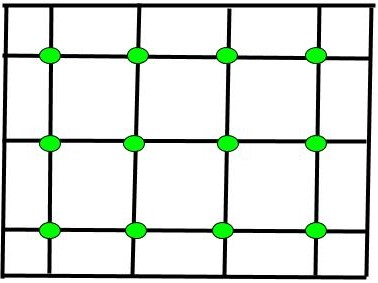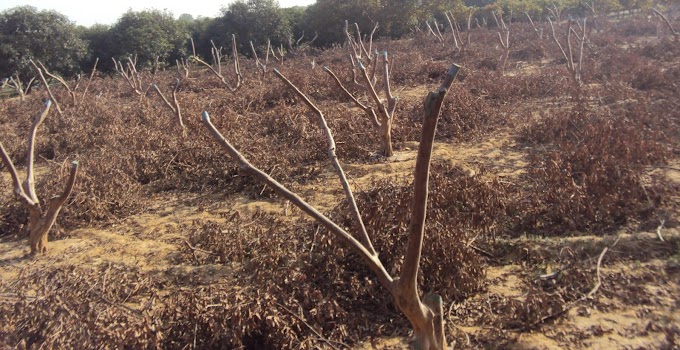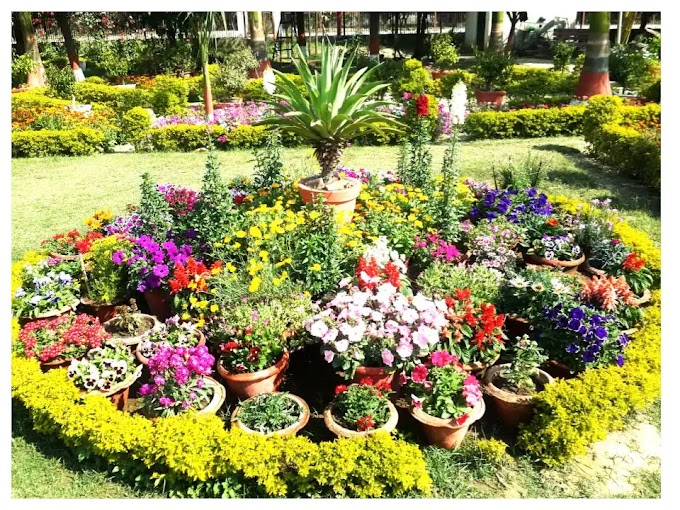Parthenocarpy and
Parthenogenesis
Parthenocarpy refers to the development of the fruit (ovary)
without fertilization whereas Parthenogenesis refers to the development of an
egg cell (seed) without fertilization. The fruits that develop
parthenocarpically are typically seedless. The triploid plants containing 3
sets of chromosomes rather than 2 sets in its cells are sterile and producing seedless
fruits of Horticultural importance. The triploid seeds can be produced by
crossing a fertile tetraploid (4n) plant with a normal diploid (2n) plant.
Seedless watermelon: To
get the seedless watermelon fruits from sterile triploid watermelon plants both
fertile diploid and sterile triploid seeds of
watermelon are sown in same plots.
The male flowers on the diploid plant pollinate flowers of sterile triploid plants
but does not fertilize. The pollination requires inducing seedless fruit
development from triploid watermelon plants parthenocarpically with out
fertilization.
Seedless Banana:
The banana fruit developed parthenocarpically from sterile triploid hybrids (Musa paradisiaca) is seedless. Tha M. pasadisiaca is a complex hybrid
obtained from two fertile diploid Asian
species, M. acuminata (sugary) and M. balbisiana (starchy). The hybrid
between M. acuminata (AA genomes) and
M. balbisiana (BB genomes) produced
either diploid hybrids (AB) or triploids (AAB, ABB etc.). It seems that M. acuminata migrated to the area of M. balbisiana followed by non-reduction
to produced triploids. Common cultivated
banana are triploid (3n) with three sets of Chromosomes representing AAB, ABB
or another 3-leatters combination of A,s and B,s where A and B representing one
haploid (n) set of Chromosomes from diploid M.
acuminata (AA) and diploid M. balbisiana (BB), respectively. The
homologous Chromosomes make pair with each other during synapsis of prophase I
under normal meiosis to form haploid (n) gametes. In sterile triploid banana one
set of Chromosome A or B has no homologous set to make pair during meiosis
resulting unviable gametes formation. Subsequently seedless banana fruits
develop parthenocarpically from unreduced gametes (2n+n) without fertilization.
The aborted ovules inside the banana fruit may appear like tiny black dots.
M.
acuminata (AA) X M. balbisiana (BB) = M.
paradisiacal (AB or AAB, ABB etc)
(Fertile Asian banana) X (fertile Asian banana) = (diploid
hybrid or sterile triploid)
Seedlessness
in Grape: The gibberellic acid (GA3) is
used to induce seedlessness in grape cultivars like ‘Thompson seedless in which
ovaries mature into berry with failure of the ovules to develop. The berries
become larger with longer internodes for better air circulation and lesser
susceptibility to fungal diseases and rotting. The ‘Thompson seedless’ grape is
not parthenocarpic fruit because fertilization takes place but ovules fail to
develop into seeds.







